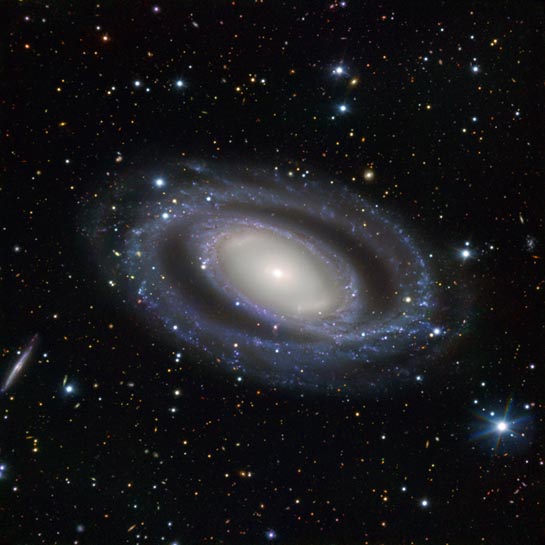
Spiral Galaxy
RA 21h 44m 17.11s Dec -75° 6' 40.13"
Octans
95 million light-years
11.3
152,400 light-years (est), (4.0 by 2.6?) arcmin
7.21 x 7.43 arcminutes
North is -0.0° left of vertical
ESO
July 24, 2017
ABOUT THIS IMAGE:
Approximately 95 million light-years away, in the southern constellation of Octans (The Octant), lies NGC 7098 — an intriguing spiral galaxy with numerous sets of double features. The first of NGC 7098’s double features is a duo of distinct ring-like structures that loop around the galaxy’s hazy heart. These are NGC 7098’s spiral arms, which have wound themselves around the galaxy’s luminous core. This central region hosts a second double feature: a double bar.
NGC 7098 has also developed features known as ansae, visible as small, bright streaks at each end of the central region. Ansae are visible areas of overdensity — they commonly take looping, linear, or circular shapes, and can be found at the extremities of planetary ring systems, in nebulous clouds, and, as is the case with NGC 7098, in parts of galaxies that are packed to the brim with stars.
This image is formed from data gathered by the FOcal Reducer and low dispersion Spectrograph (FORS) instrument, installed on ESO’s Very Large Telescope at Paranal Observatory. An array of distant galaxies are also visible throughout the frame, the most prominent being the small, edge-on, spiral galaxy visible to the left of NGC 7098, known as ESO 048-G007. NGC 7098 was first discovered by John Herschel on September 22, 1835.